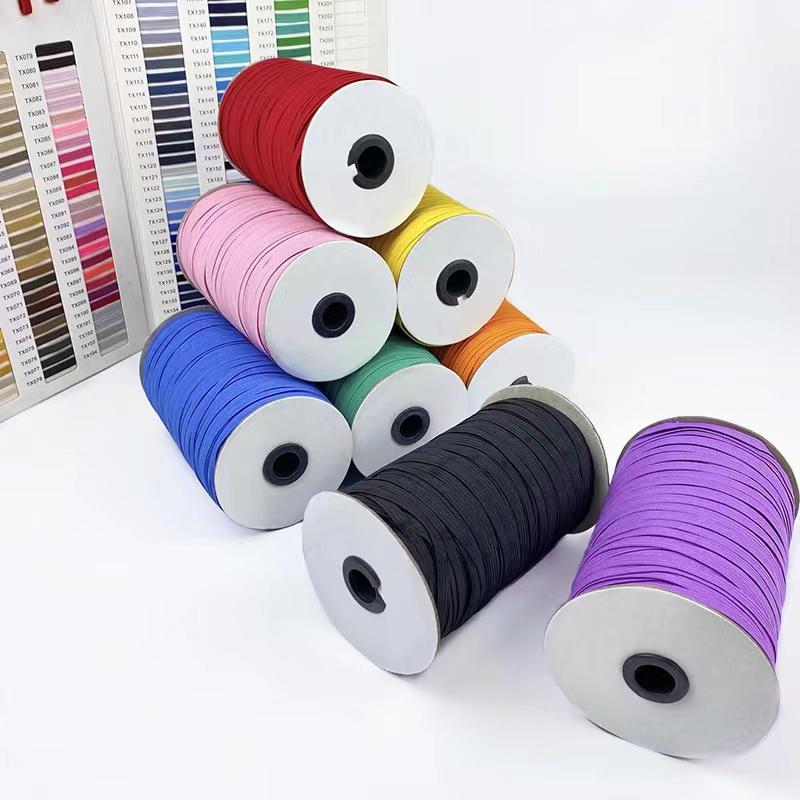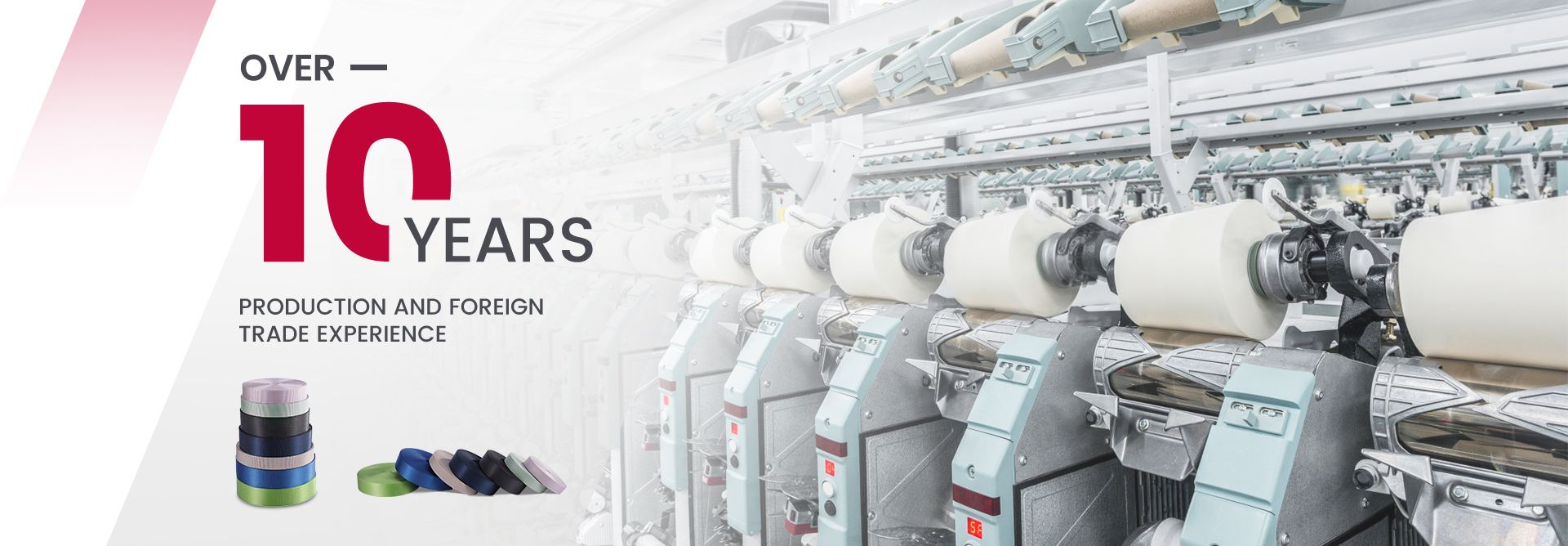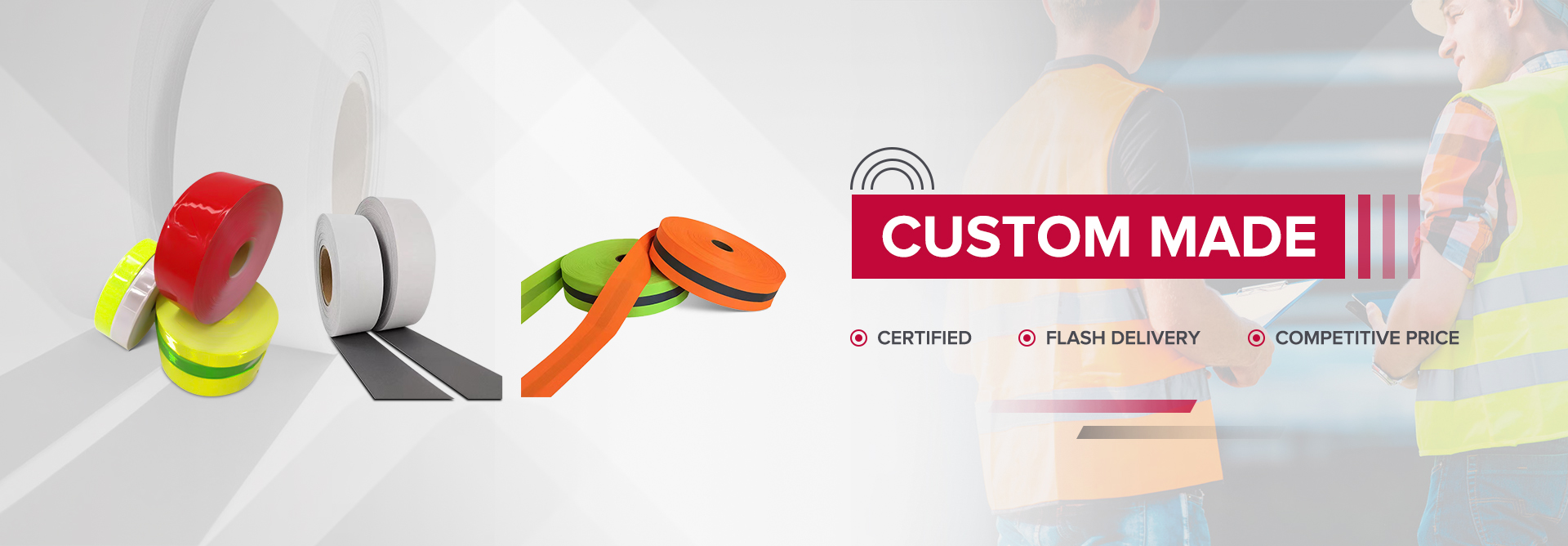

A Tangled Tale of Webbing
When it comes to creating sturdy and stylish bag handles, the choice of webbing tape for bag handles plays a crucial role. But what exactly is webbing, and why is it essential in bag design? Let's unravel the basics of this fundamental component.
The Basics of Bag Handle Webbing
What is Webbing and Why Use it?
Webbing is a strong woven fabric often made from materials like nylon, cotton, or polyester. It is specifically designed to withstand heavy loads and provide durability, making it an ideal choice for bag handles. The primary purpose of using webbing for bag handles is to ensure that they can bear the weight of the contents without stretching or tearing. Additionally, webbing offers a level of structural support that enhances the overall functionality and longevity of the bag.
The Role of Webbing in Bag Design
In bag design, webbing serves as the backbone for ensuring that the handles are not only robust but also comfortable to hold. By incorporating webbing into the handle construction, designers can achieve a balance between strength and usability. This allows for the creation of bags that are both practical and aesthetically pleasing.
A Brief History of Webbing
From Ancient Ties to Modern Straps
The use of webbing dates back centuries, with its origins rooted in ancient civilizations where woven materials were utilized for various purposes including securing goods during transportation. Over time, advancements in weaving techniques led to the development of more sophisticated forms of webbing suitable for different applications.
The Evolution of Webbing Materials
As technology progressed, so did the materials used to create webbing. Innovations in synthetic fibers such as nylon and polyester revolutionized the durability and versatility of modern-day webbing. These advancements paved the way for a wide range of applications beyond traditional uses, including outdoor gear, military equipment, and fashion accessories.
By understanding the historical significance and functional aspects of webbing, one can truly appreciate its indispensable role in crafting reliable and resilient bag handles.
The Strong, The Soft, and The Waterproof
When it comes to selecting the ideal webbing for bag handles, understanding the unique properties of different materials is essential. Each type of webbing offers distinct advantages that cater to specific needs and preferences.
Nylon: The Hercules of Webbing for Bag Handles
Strength and Durability Defined
Nylon webbing stands out as a powerhouse in the realm of bag handle materials due to its exceptional strength-to-weight ratio and impressive abrasion resistance. This synthetic fabric is renowned for its robustness, making it an excellent choice for bag handles that require resilience against heavy loads and frequent use. Its ability to maintain structural integrity under stress sets it apart as a reliable option for ensuring the longevity of bag handles.
When to Choose Nylon Webbing
Nylon webbing is the go-to choice when durability and strength are paramount considerations. Its high resistance to wear and tear makes it suitable for bags that will be subjected to rigorous use, such as backpacks, duffel bags, or outdoor gear. Additionally, its lightweight nature ensures that the bag remains comfortable to carry without compromising on sturdiness.
Cotton: The Comfort King of Webbing
Softness That Speaks Volumes
In contrast to nylon's robustness, cotton webbing takes center stage with its unparalleled softness and comfort. This natural fiber provides a gentle feel against the skin, making it an excellent option for bag handles where comfort is prioritized. The supple texture of cotton webbing adds a touch of luxury to bags while offering a pleasant tactile experience for users.
Ideal Situations for Cotton Webbing
Cotton webbing shines in situations where comfort and aesthetics take precedence over heavy-duty performance. Bags intended for everyday use or fashion-forward designs benefit from the soft embrace of cotton webbing. Its ability to mold comfortably to the hand makes it an inviting choice for tote bags, purses, or casual carryalls.
Poly Webbing: The Affordable Protector
Water-Resistance on a Budget
Poly webbing emerges as a cost-effective solution that doesn't compromise on functionality. Known for its water-resistant properties, this synthetic material provides reliable protection against moisture-related damage. Its affordability makes it an attractive option for projects with budget constraints without sacrificing essential features.
Poly Webbing's Best Uses
Poly webbing finds its niche in applications where exposure to water or damp environments is anticipated. Bag handles designed for outdoor activities, beach outings, or travel accessories can benefit from poly webbing's ability to repel water effectively while offering dependable support.
By recognizing the distinctive characteristics of nylon, cotton, and poly webbings, individuals can make informed decisions based on their specific requirements and preferences when choosing the perfect match for their bag handles.
Why Your Choice of Webbing Matters
When it comes to selecting the perfect webbing for bag handles, the choice holds significant importance, influencing not only the durability and usability of the bag but also its overall aesthetic appeal. Understanding the impact of webbing selection is crucial for creating a well-crafted and functional bag that meets both practical and visual expectations.
Impact on Durability
How Webbing Affects Bag Lifespan
The choice of webbing directly impacts the durability and longevity of a bag. The robustness and resilience of the selected webbing material determine how well the handles can withstand daily wear and tear, heavy loads, and various environmental conditions. Opting for a durable webbing ensures that the bag maintains its structural integrity over time, reducing the need for frequent repairs or replacements.
Comfort and Usability
The Feel Factor
In addition to durability, the comfort and usability of a bag are heavily influenced by the type of webbing used for its handles. The tactile experience offered by different materials can significantly impact user satisfaction. Soft and supple webbing enhances the carrying experience, making it more enjoyable for individuals to use the bag regularly without discomfort or strain.
Aesthetic Appeal
Matching Webbing with Bag Design
Beyond functionality, the choice of webbing plays a pivotal role in enhancing the overall aesthetic appeal of a bag. Selecting webbing that complements or contrasts with the bag's design can elevate its visual impact. Whether aiming for a cohesive look or seeking to create striking contrasts, matching the webbing with the bag's design elements contributes to its overall allure.
From Cotton to Nylon: A Webbing Showdown
When it comes to selecting the perfect webbing for bag handles, the choice between different materials often leads to a showdown between nylon, polyester, and polypropylene. Each type of webbing offers unique characteristics that cater to specific needs and preferences, making it essential to understand their comparative advantages.
The Battle of Strength: Nylon vs. Poly
A Comparative Analysis
Nylon webbing is renowned for its exceptional strength-to-weight ratio, impressive abrasion resistance, and elasticity. On the other hand, polyester webbing stands out for its exceptional strength, resistance to UV radiation, and durability. Meanwhile, polypropylene webbing is known for its durability, strength, resistance to water, cost-effectiveness, and flexibility.
When comparing nylon and polyester webbing, nylon's high resistance to wear and tear makes it a top choice for applications requiring robustness. Its elasticity further enhances its suitability for withstanding heavy loads without compromising on durability. Conversely, polyester's exceptional strength and UV resistance make it an ideal candidate for outdoor use where exposure to harsh environmental conditions is expected.
Polypropylene webbing offers a balance of durability and cost-effectiveness while providing excellent water resistance. Its flexibility makes it suitable for various applications where adaptability is crucial. When considering the battle of strength among these materials, each has its own set of advantages tailored to specific requirements.
The Softness Showdown: Cotton vs. The World
Why Softness Can Win
While nylon and polyester excel in strength and durability, cotton webbing takes center stage with its unparalleled softness and comfort. The natural fibers of cotton provide a gentle feel against the skin, making it an excellent option for bag handles prioritizing comfort over heavy-duty performance.
In contrast to synthetic materials like nylon and polyester that focus on resilience under stress, cotton's emphasis on softness offers a compelling advantage in enhancing user experience. The supple texture of cotton webbing adds a touch of luxury to bags while providing a pleasant tactile experience for users.
Waterproof Wonders: Poly Takes the Stage
The Importance of Being Water-Resistant
When it comes to waterproof properties, polypropylene webbing emerges as a standout contender due to its inherent resistance to water. This characteristic makes polypropylene an ideal choice for bag handles intended for outdoor activities or environments where exposure to moisture is anticipated.
Polyester also boasts water-resistant qualities along with UV resistance, making it suitable for outdoor applications where protection from environmental elements is crucial. On the other hand, while nylon exhibits water-repellent properties as well as quick-drying capabilities due to its synthetic nature, polypropylene's dedicated focus on water resistance positions it as a reliable option in scenarios demanding heightened protection against moisture-related damage.
By understanding the comparative strengths of nylon versus polyester versus polypropylene webbings alongside the softness advantage offered by cotton webbing in addition to the waterproof wonders presented by polypropylene material; individuals can make informed decisions based on their specific requirements when choosing the perfect match for their bag handles.
Finding Your Perfect Webbing Match
When it comes to finding the perfect webbing for bag handles, it's essential to assess your specific needs and preferences. The choice of webbing can significantly impact the functionality and aesthetics of the final product, making it crucial to consider various factors before making a decision.
Assessing Your Needs
Functionality vs. Aesthetics
Before selecting the ideal webbing for bag handles, it's important to weigh the balance between functionality and aesthetics. Consider the intended use of the bag and prioritize features that align with its primary purpose. For instance, if durability and strength are paramount, nylon webbing may be the top choice due to its exceptional resilience. On the other hand, if comfort and softness take precedence, cotton webbing could be the preferred option for a more luxurious feel.
Additionally, take into account the visual appeal of the webbing in relation to the overall design of the bag. The color, texture, and pattern of the webbing should harmonize with or complement the bag's aesthetic elements to create a cohesive and visually appealing result.
The Ultimate Webbing Selection Guide
A Step-by-Step Approach
1. Identify Specific Needs: Begin by identifying the specific requirements of your project. Consider factors such as load-bearing capacity, resistance to environmental elements, user comfort, and visual appeal.
2. Evaluate Material Characteristics: Once you've identified your needs, evaluate the characteristics of different types of webbing materials available. Nylon stands out for its strength and durability, making it suitable for heavy-duty applications. Cotton excels in providing a soft and comfortable feel while adding a touch of elegance to bags. Polypropylene offers water-resistant properties along with cost-effectiveness.
3. Match Material Properties with Requirements: Match the properties of each material with your project's requirements based on their unique strengths. If moisture resistance is crucial, polypropylene may be an ideal choice; if durability is a priority, nylon would be a suitable option; for comfort-focused designs, cotton would be an excellent match.
4. Consider Coated Webbing Options: In some cases where additional protection is needed against abrasion or moisture, coated webbing can provide enhanced durability and water resistance without compromising on flexibility or aesthetics.
5. Test Samples: If possible, obtain samples of different webbing materials to test their performance under simulated conditions relevant to your project. This hands-on approach can provide valuable insights into how each material behaves in real-world scenarios.
6. Seek Expert Advice: If you're uncertain about which type of webbing best suits your needs or if you have specific technical requirements such as chemical resistance or fire retardancy, seeking advice from industry experts can offer valuable guidance in making an informed decision.
By following this step-by-step approach in selecting webbing for bag handles based on functionality versus aesthetics and understanding specific needs through expert advice and testing samples when possible; individuals can make well-informed decisions that align with their project goals while ensuring optimal performance and visual appeal.
Conclusion: A Webbing Wrap-Up
Recap of Webbing Wisdom
As we conclude this journey through the realm of webbing for bag handles, it's essential to recap the valuable insights gained along the way. The basics of webbing have been unraveled, shedding light on its pivotal role in ensuring the durability and functionality of bag handles. From the robust strength of nylon to the luxurious softness of cotton and the water-resistant properties of poly webbing, each material offers unique advantages tailored to specific needs and preferences.
The comparative analysis has provided a comprehensive understanding of how different webbing materials stack up against each other, offering a clear perspective on their respective strengths and ideal applications. Whether prioritizing durability, comfort, or water resistance, individuals now possess the knowledge needed to make well-informed decisions when selecting the perfect match for their bag handles.
The Future of Webbing for Bag Handles
Innovations on the Horizon
Looking ahead, the future of the webbing market looks promising, with ongoing technological innovations shaping the growth trajectory of this industry. Continuous research and development (R&D) activities are expected to drive advancements in synthetic fibers and sustainable materials, offering enhanced durability, weight reduction, and eco-friendly alternatives in webbing products. This focus on innovation is set to revolutionize the landscape of webbing for bag handles, presenting new opportunities for designers and manufacturers to create cutting-edge solutions that meet evolving consumer demands.
Making the Sustainable Choice
In response to increasing consumer consciousness about environmental impact, there is a growing demand for eco-friendly webbing materials and manufacturing processes. This trend is promoting the adoption of recycled and biodegradable options that reduce environmental footprint while maintaining high performance standards. Manufacturers are investing in compliance testing and certifications to ensure that high-quality webbing materials meet stringent safety standards across industries.
Furthermore, as sustainability takes center stage in product development across various sectors, including outdoor gear, military equipment, automotive applications, transportation, luggage and bags, safety equipment, furniture, medical devices, and more; it becomes evident that sustainable choices in webbing will play a crucial role in shaping future design trends.
In conclusion, as we navigate through an era marked by technological advancements and heightened environmental awareness; embracing innovative solutions while making sustainable choices will be key in defining the future landscape of webbing for bag handles.
By staying informed about emerging trends and leveraging sustainable practices in material selection and manufacturing processes; individuals can contribute to a more environmentally conscious approach while driving forward-thinking developments within the realm of webbing for bag handles.
With this wrap-up on our exploration into webbing for bag handles; may your future endeavors be woven with resilience, comfort, style – all supported by sustainable choices!
Post time: May-09-2024



